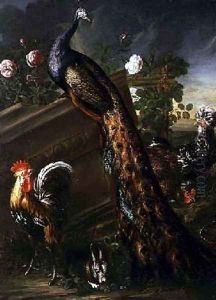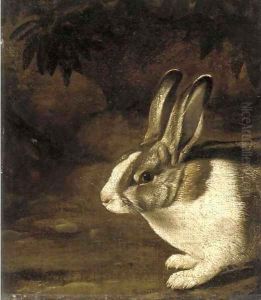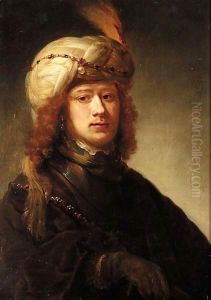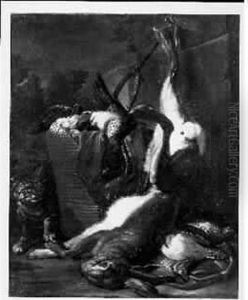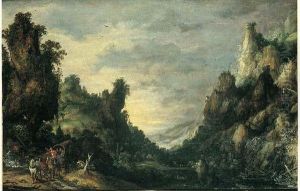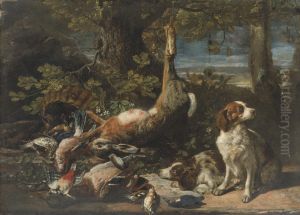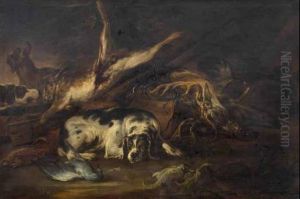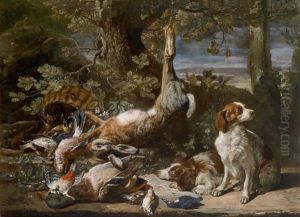David de Koninck Paintings
David de Koninck, also known as David Koninck or Rammelaar, was a Flemish painter born in Antwerp in 1636. He was a talented artist who specialized in a variety of subjects, including still life, landscapes, and particularly animal paintings. De Koninck's work is notable for its meticulous detail, vibrant colors, and the lively depiction of his subjects, which ranged from pastoral scenes to more scholarly studies of animals in their natural environments.
After receiving his initial training in Antwerp, de Koninck's artistic journey led him to Rome, which was a common pilgrimage for artists of his time seeking to refine their skills and draw inspiration from the Renaissance masters. His time in Rome significantly influenced his style and thematic choices, integrating the Italianate landscape and lighting into his Flemish painting techniques. Despite being less known than his contemporaries, de Koninck's work was highly valued for its quality and realism, especially his contributions to the genre of animal painting, which were considered exceptional for their accuracy and vitality.
David de Koninck's career unfolded during the Dutch Golden Age, a period renowned for its remarkable output in arts and sciences. Within this context, de Koninck managed to carve a niche for himself with his distinct focus on natural history subjects, which was somewhat atypical among his peers who were more inclined towards portraiture, maritime themes, and urban landscapes. His paintings not only serve as beautiful examples of 17th-century art but also as valuable historical documents that offer insights into the contemporary interest in naturalism and the scientific study of the natural world.
His works were collected by art connoisseurs across Europe, reflecting the broad appeal of his paintings. Despite the admiration his work garnered during his lifetime and thereafter, David de Koninck remains a somewhat obscure figure in art history, overshadowed by the luminaries of his era. He died in Brussels in 1687, leaving behind a legacy that, while not as widely recognized as that of some of his peers, is cherished among aficionados of Flemish art for its unique contribution to the genre of animal and landscape painting. Today, his paintings can be found in various museums and private collections, where they continue to be appreciated for their beauty and historical value.
